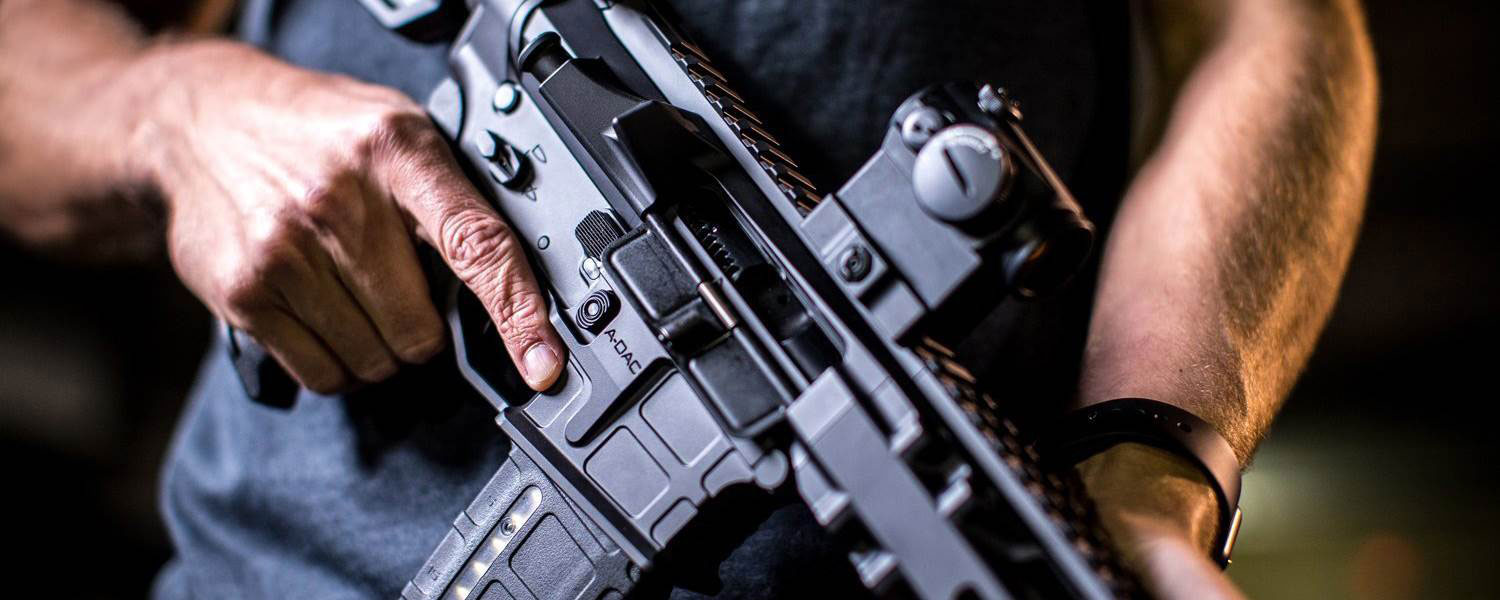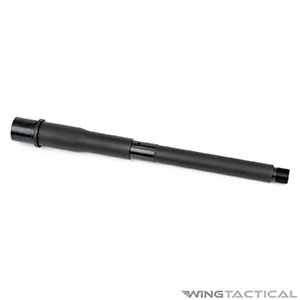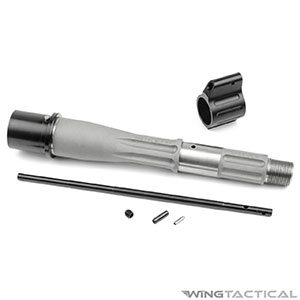Wing Tactical maintains a professionally-curated collection of .300 Blackout barrels for today’s hunters, law enforcement officers, and competition shooters. View our selection of .300 Blackout barrels for sale below.

.300 Blackout Barrels: An Overview
Since it hit the market, the AR-15 has been popular because of its versatility, efficiency, and easy customization. You can build your firearm from scratch or customize an AR-15 base model to create any style of gun you need.
With a .300 Blackout barrel, you can configure your AR-15 to fire the unique .300 Blackout round, which offers powerful, accurate performance and an even greater array of options to meet your needs as a shooter.
Want to learn more about the specifics of .300 Blackout? Check out our guide to .300 Blackout on our blog.

Standard .300 Blackout Barrels
Wing Tactical carries standard .300 Blackout barrels — models without fluting or other specialty characteristics — from numerous manufacturers like Spike’s Tactical, Ballistic Advantage, Faxon Firearms, and more.

Match-Grade Barrels
Match-grade barrels are manufacturers with tighter factory tolerances, and this feature can often promote improved accuracy.

Fluted Barrels
If you’re looking to reduce your carry weight or your shooting context demands repeat fire, a fluted barrel might be the right match for your next .300 Blackout AR build. Fluting can decrease the overall weight of your barrel (and, thus, your rifle) and offers an increased surface area for faster cooling.
Wing Tactical: Your Satisfaction, Guaranteed
At Wing Tactical, we're dedicated to ensuring every person who shops with us is 100% satisfied. We ensure this satisfaction by focusing on outstanding customer care. If you have any questions or concerns about any part of your shopping experience, our friendly and knowledgeable staff is happy to help.
Another way we guarantee your satisfaction is by offering only the highest quality products. Every item in our shop is hand-picked by our experienced team and backed by our personal seal of approval. We don't stock any products we wouldn't be willing to use on our own firearms.
Other perks of shopping with Wing Tactical include:
- Fast shipping – Most orders ship the same day they're placed, so you'll get your new barrel fast.
- Hassle-free returns – Return almost anything within 30 days with no restocking fee and no questions asked.
- Discounts for LEO and military – To thank you for your service, we offer LEOs, military personnel, and first responders an additional discount in our shop.
Whether you're upgrading your current AR-15 or starting a new build from scratch, you can shop Wing Tactical’s collection to find .300 Blackout barrels for sale.
Frequently Asked Questions
What’s the history of the .300 Blackout round?
In 2009, the U.S. military contracted Advanced Armament Corporation (AAC) to create a quiet, new cartridge that would replace the MP5SD as the Spec-Ops weapon of choice. This new ammunition was intended for use in closer quarters and needed to deliver more power than its predecessors while remaining compatible with the M4/AR-15 platform.
The .300 Blackout uses virtually the same case as the 5.56 shell, but the case is necked up to accept a .30-caliber bullet and then trimmed to the correct length.
AAC began by looking at the previously developed .300 Whisper cartridge and reengineered it to increase its reliability, accuracy, and performance. The resulting .300 Blackout cartridge was officially approved in 2011 and has steadily gained popularity in the years since, becoming one of the best-loved cartridges for both military and civilian use.
What are some benefits of .300 Blackout?
An AR-15 set up for .300 Blackout is arguably one of the most versatile builds available.
The .300 Blackout carries a .30-caliber bullet that offers greater mass than a .223 round. Though these bullets are delivered at a lower velocity, the .300 Blackout's lower chamber pressure and fast-burning powder allow for shorter, lighter barrels ideal for close combat.
The .300 Blackout cartridge is available with a wide range of projectiles, allowing you to select and fire whichever is best for a given occasion. Your AR-15 with a Blackout barrel is able to safely discharge any of the .300 Blackout ammunition out there without modification, including both super and subsonic ammunition.
How do you choose the right .300 Blackout barrel?
The key to choosing the right .300 Blackout barrel for your firearm is to start by deciding how you want to use that gun. If you plan to use your .300 Blackout AR-15 for shorter distances or home defense, you should choose a shorter, lighter barrel. A longer barrel with a heavy profile will provide better accuracy for long-distance shooting. Also, keep the twist rate in mind to ensure the barrel you buy will fit your applications — some twists are more geared for either supersonic or subsonic ammo.
Beyond barrel length, one of the most important factors for selecting the best Blackout barrel for your AR-15 is choosing a high-quality product. Look for barrels from reputable manufacturers and check out the product reviews.
What can you use .300 Blackout for?
The .300 Blackout offers versatility for all kinds of firearm enthusiasts, from military personnel to competition shooters. AR-15s set up for .300 Blackout can handle projectiles with weights ranging from 110 grains to 220 grains.
Blackout rounds are a particularly popular choice for hunting because they offer considerable power and frontal area, allowing you to make an ethical kill at ranges up to about 200 yards. They're also popular for home defense since the larger bullets and lower velocities reduce the risk of overpenetration.
What caliber should you chamber your AR platform rifle in?
If you’re considering building an AR platform rifle but you aren’t sure which caliber to choose, consider:
- Your applications – If you’re looking to hunt with your AR, consider your typical distance and choose a caliber with the appropriate ballistics and lethality to ethically kill your target species.
- Your configuration – Your chosen configuration should also influence your caliber choice. If you’re looking to build an AR pistol, for instance, you might opt for a traditional pistol round (like 9mm).
- Ammunition availability – Before choosing a caliber, take a look at ammunition availability and pricing in your area. Your build simply won’t be practical if it’s impossible to find ammunition for it.
- Ammunition standardization – Consider chambering your custom AR rifle in a cartridge that matches another firearm in your collection in the interest of standardizing your ammunition supply.






